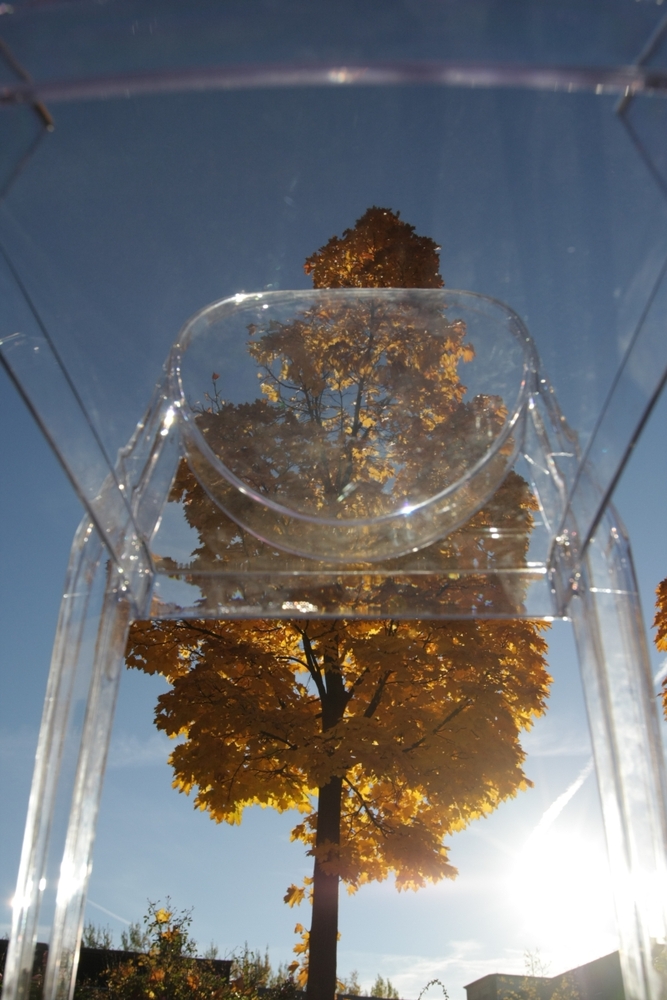(smow) blog Design Calendar: 18th January 1949 – Happy Birthday Philippe Starck!
A few years ago the (smow) blog telephone rang…..
“Good morning is it possible to speak to Philippe Starck please?” enquired the caller.
“I’m sorry he’s not here at the moment” we replied, truthfully, if not altogether helpfully.
“When will it be possible?” came the inevitable follow-up.
“We’re not really sure, he’s not here in Leipzig that often”, we responded, truthfully if, again, not altogether helpfully, “you’re probably better phoning the Paris office they tend to be better informed”
It wasn’t our proudest moment. But one of the more satisfying.
A few months later we failed to secure an interview with Philippe Starck at Milan Design Week.
We can’t prove the two are related, but, you know, karma.
Born on January 18th 1949 in the Parisian suburb Neuilly-sur-Seine to an inventor/aircraft engineer father and a housewife mother, Philippe Starck grew up in first Neuilly and laterally Garches Marne-la-Coquette and more or less attended the private École Camondo design school. Following a tenure with Studio Pierre Cardin in Paris, Philippe Starck initially made a name for himself in the late 1970s as a nightclub designer before in 1983, as part of a programme of cultural promotion, he was commissioned to design private rooms in the Élysée Palace for the French President Francois Mitterand and his wife Danielle. The Élysée commission, together with his 1984 design for Cafe Costes – an establishment of which the German newspaper Die Zeit wrote “No café in Paris is currently more “en vogue” …. and none has so much chic and flair”1 – helped catapult Philippe Starck into the rapidly expanding world of interior design. And from there into the even more rapidly expanding universe of furniture design.
Characterised by an almost unbearable Post Modern meets Art Deco garishness, a character trait his furniture retains to this day, Philippe Starck’s early furniture designs caught the mood of the time, and more importantly, the attention of manufactures. From his first commissions for the Italian manufacturers Driade and Baleri Philippe Starck has gone on to collaborate with the likes of Vitra, Cassina, Alias and perhaps most famously Kartell where products such as La Marie, Louis Ghost or the Bubble Club sofa have established themselves as genuine modern furniture design classics.
Philippe Starck is however more than furniture. A prodigious creator, Philippe Starck’s canon is as diverse as it is incessant: buildings, hotel interiors, water fountains, lamps, motorcycles, televisions, telephones, toothbrushes, glasses, wind turbines, clothing, bottles…. and of course the most famous lemon juicer of all time. This variety, and the inevitable contradictions and conflicts that arise on account of the range of projects undertaken, make Philippe Starck a very hard designer to pin down. Or perhaps better put, makes him easy to misunderstand. Something not helped by the fact that most Philippe Starck books tend to be heavily image based, and what texts they have tend to be repetition of the same anecdotes.
There is no easy way to discover the real Philippe Starck. Especially if like us you toy foolhardishly with karma’s fickle temperament.
And so we thought to mark Philippe Starck’s birthday we’d let the man himself explain himself in a baker’s dozen of quotes that we hope present a balanced and fair picture of designer once memorably described by the Sydney Morning Herald as “…. the most fashionable furniture, nightclub, yacht and pasta designer in France”2
Praise indeed.
Happy Birthday Philippe Starck!
The word design does not exist. It is the English word for dessin, which is devoid of all meaning. There are those who think that it is about making things more beautiful in order to sell them. The great designer Raymond Loewy, for example. There is some truth in that. Others such as myself, believe that it is a bit more complicated: that it is a semiological task which makes use of a didactic tool in order to try to improve people’s lives and, as a result, the quality of their thoughts. That is extremely pretentious, but if it were otherwise there would be no point in doing it.
The World/Peace according to Starck Extract of a converstaion in April 1996 with Pierre Doze, Moscow. Reprinted in Starck Benedikt Taschen verlag, Köln 1996.
I remember, in my younger days, saving up to buy my first Wassily Chair. When I was finally able to buy it I took it home, bursting with pride: there it was, real proof that I had finally made it as a designer. But I found that I just could not sit in it and that it was completely impossible to live with. I still have it, but I think it is in the garden now. The trouble was that it spoke simply the language of design, whereas I believe that as designers we have a duty to talk other people’s languages too.
The International Design Yearbook Volume 3, Abbeville Press, New York, NY 1987
I am inspired by nothing except myself and my own madness. No-one has ever inspired me, neither God nor master, nor man nor woman nor animal nor culture nor film nor anything at all.
Alison Culliford, “Style Profile: Philippe Starck”, Eurostar Metropolitan Magazine June 2013 http://www.ink-live.com/emagazines/eurostar-metropolitan/1378/june-2013/#23/z Accessed 17.01.2014
I’m not a designer, I’m not an architect, I’m not a specialist… I’m not specialised in anything, which means I’m specialised in everything. I’ve designed hotels, toothbrushes, lamps, chairs, tables, every kind of object. But the product in itself doesn’t mean anything. As far as I am concerned it’s just an excuse to get involved in something else, in what life could be, for example…. To sum it all up, I consider myself to be a political agitator who uses design and architecture…. This is my real occupation
Interview by M di Forti with Philippe Strack in Il Messaggero 4/6/1993 in Franco Bertoni, The Architecture of Philippe Starck, Academy Editions 1994
This obviously means getting rid of recycling, which is just a marketing gimmick…. Recycling was invented by the ecologists, but in the end, all it does is enable us to go on producing and consuming wastefully. A good product is a product which lasts…. I am not against recycling, I am against its being used as a universal panacea. Recycling is a sticking plaster, a way of repairing a mistake, nothing more.
Extract of a conversation with Elisabeth Laville (in August 1998) originally published in a special issue of La Lettre d’Utopies/”Responsible Design” reprinted in Reprinted in Starck Benedikt Taschen verlag, Köln 2000
For myself I have to make it clear that my cultural background is not really French. It is the product of a childhood colonized by dreams of America. Even my father came under these same influences: he spent his life designing aircraft, and was Americanized enough to wear a Stetson. And it is perhaps that American influence that has shaped my work, to the extent that I proceed instinctively and, above all, fast.
The International Design Yearbook Volume 3, Abbeville Press, New York, NY 1987
In other words, to put it simply, I am not interested in design. The reason for this is that when we speak of design we speak about objects. I am bored to hell of chairs. Even my own. One more chair, another lamp, what is the interest in that?…We have moved from traditional design – Bauhaus, Lowey, people fascinated by the object itself, which gave rise to some very beautiful results – to the explosion, like the glow of a light bulb before it burns out, in the last 15 years of a narcissistic design, done by designers for other designers, a masturbatory exhibition of their know-how, of their panache.
The World/Peace according to Starck Extract of a converstaion in April 1996 with Pierre Doze, Moscow. Reprinted in Starck Benedikt Taschen verlag, Köln 1996.
Creativity is for me no end in itself. For that I lack the fantasy, and anyway it doesn’t interest me. I’m much more interested with the everyday, with things that concern us all; underwear, washing, rain protection and I endow these things a fifth dimension, a depth that allows normal everyday objects to be more than themselves. I try to bring a little shine to the daily routine, to show that our urban reality can also be sinful and interesting.
Conway Lloyd Morgan Philippe Starck bangert verlag Schopfhein 1999
My father had matured the idea that research in all fields is almost a duty in life, a kind of obligation. We must invent, it is our place, our mission. Culture, the notion of taste, was subordinate to this research. Just as well to make a creative mistake rather than be holed up in a state of stagnation in good taste. That has partly influenced me; its part of my heritage, always wanting to create, be creative….
Christine Colin Starck Ernst Wasmuth Verlag, Tübingen 1989
My work is about the transformation of “obligations” into something else; it’s an addition of soul. What I’m saying is that when I’m forced to consume, to expiate this consumption, I inject it with soul, until the object becomes something else, or becomes a small poetic part. This is typified in my work on the toothbrush. True, we are obliged to brush our teeth, and we are therefore forced to keep a toothbrush in our bathroom – can’t dispute that – but, with a bit of effort we notice that suddenly…. voila! it becomes something else; a flame, a ray of light, an object….
The Architecture of Philippe Starck, Academy Editions 1994
In the 1950s, one of the fathers of design, Raymond Loewy, invented a slogan which was responsible both for his own success and, in part, for that of the design movement: “ugliness doesn’t sell well.” At that time, he may have been right, but I’m afraid that this formula was already structurally flawed. We have to escape from this flaw, we have to kill the word of the father…. We have to understand that “ugliness doesn’t sell well” means that design is simply the slave of industry and production, that its role is to help things sell. Structurally, that is no longer what we do. Today, the problem is not to produce more so you can sell more. The fundamental question is that of the product’s right to exist. And it is the designer’s right and duty, in the first place, to question the legitimacy of the product, and that is how he too comes to exist.
Extract of a conversation with Elisabeth Laville (in August 1998) originally published in a special issue ofLa Lettre d’Utopies/”Responsible Design” reprinted in Reprinted in Starck Benedikt Taschen verlag, Köln 2000
The first thing for us to remember is that creativity has a duty of political action. And now we have forgotten that, and young designers just think about being a star and making money. They forget their duty to society. Everything you do must be in relation to your civilization, your society, yourself, your life: without that the objects you make are just objects. That’s why I try to wake people up a little and say everything you do is a political vote.
Julie Taraska “Philippe Starck’s Politique” www.metropolismag.com/December-1969/Philippe-Starck-rsquos-Politique/ Accessed 17.01.2014
I have no taste…. but really, I have no taste at all
“The fabulous styles of the man with no taste” Sydney Morning Herald, Thursday Oct 16th 1986 Style Section, page 1
1 “Bonbon aus Paris. Cafe der achtziger Jahre.” Die Zeit 13th September 1985. http://www.zeit.de/1985/38/cafe-der-achtziger-jahre Accessed 17.01.2014
2 “The fabulous styles of the man with no taste” Sydney Morning Herald, Thursday Oct 16th 1986. Style Section, page 1
Tagged with: bubble club sofa, Design Calendar, kartell, La Marie, Louis Ghost, Philippe Starck

